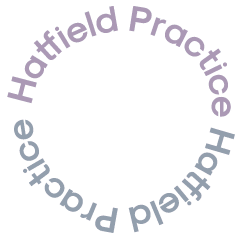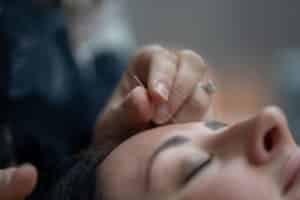Strangely, some of our patients literally crave the release and relief that manipulation and neuro – muscular massage brings to their weary bones. Osteopathy and Physiotherapy has for generations helped to relieve underlying muscle and fascia tensions, movement patterns and stiffness caused by hours of repetitive activities.
Osteopaths are well known for cracking or clicking peoples’ spines, wiggling joints and stretching shortened muscles that don’t want to stretch anymore. Physiotherapy can provide bespoke good quality exercise advice so it does not happen all over again and again.
The body can literally form itself over time, adapting into the shape your brain thinks is most functional and useful to your survival . This adaptation is really quite wonderful and has helped us as a species to be as successful as we are. If we do something often ( habits ) our brain will become ” irritated ” and fatigued by the repetitive physical cycle . The constantly contracting and relaxing of connective tissue, muscles and joints may well leave them distorted, under adverse tension and in the medium to long term painful.
Our muscular systems have an adaptive ” Eco” energy saving device. A secret weapon – special collage secreting cells called fibroblasts. These amazing cells will create collagen across bonds on the otherwise soft and elastic muscle fibres and glue them in place creating new functional tensions disturbing an otherwise elastic muscular system.
We can see this more clearly in ourselves as we age, our boney frameworks become distorted and often a functional scoliosis ( twisted spine ) develops. These adaptive chronic muscle tensions which are literally “glued” in place tend to be the real cause of wear and arthritis .We do literally bend and distort like trees in the wind. Our bodies follow the distortions of habits that follow the most consistent movement patterns. It’s muscular evolution in action. We are almost literally made at work .
The bones of our spine are very functional, each one specifically designed for its own unique purpose. These vertebra are formed one on top of each other in a column. They all move allowing bending and twisting movements of the body. Our spinal joints joints do not directly touch each other but guide each other through synovial fluid held in place by a capsule.This specialised structure is highly innervated with nerves and spacial receptors feeding the brain with huge amounts of information regarding your movement and position. The spine is also surrounded by a vast system of blood vessels. Spinal movement is important as it assists the heart in moving blood, it also massages your liver,digestive system and internal organs as you twist and bend around keeping you vital and energetic.
Only when the discs wear, through bad posture and tensions that the joints may come together and start the processes of wear. The fluid between the joints stop the bone from poliferating and growing together. The fluid filled capsule allows free smooth movement. Manipulation and deep soft tissue massage provides a method to release thereby normalising chronic postural habits.
The synovial fluid between joints contains gas bubbles. When an Osteopath or Physiotherapist performs a spinal manipulation there is a small painless separation of the joint surfaces. This happens very quickly, gently gapping the joints to free them up. The gas bubbles click, crack or pop as they disperse into the fluid. What this does is relieve pressure and restore motion to the joints.
Research has shown..
Manipulation treatment does have a basis in science. But “You Cant Measure a Rose with a Ruler” each one of us responds individually. Each practitioner has a unique approach with which different people ( not conditions) gravitate towards for healing. Pain management is so much more than boxes of pills that don’t have bespoke condition specific advice for your pain and dont support you emotionally.
Osteopathy treats and helps to normalise body tensions and helps to keep the neural system free after repetitive or traumatic trauma such as running or prolonged desk work. It will only become more widely available if it is seen to be properly researched and based on what we know about the way the body works. Osteopaths and Physiotherapists know as much about the spine as some doctors due to the nature of the training and in some cases are more knowledgeable as they are specifically trained in bio – mechanics and see many cases each and every day. Generally we get the awkward problems that others have had little or no success with.
We always try a little harder and are aware that if you don’t improve neither will we.
Call Ian Norman or email us with your specific problem
The Welwyn and Hatfield Practice ( 01707 888229 )
Ian Norman





